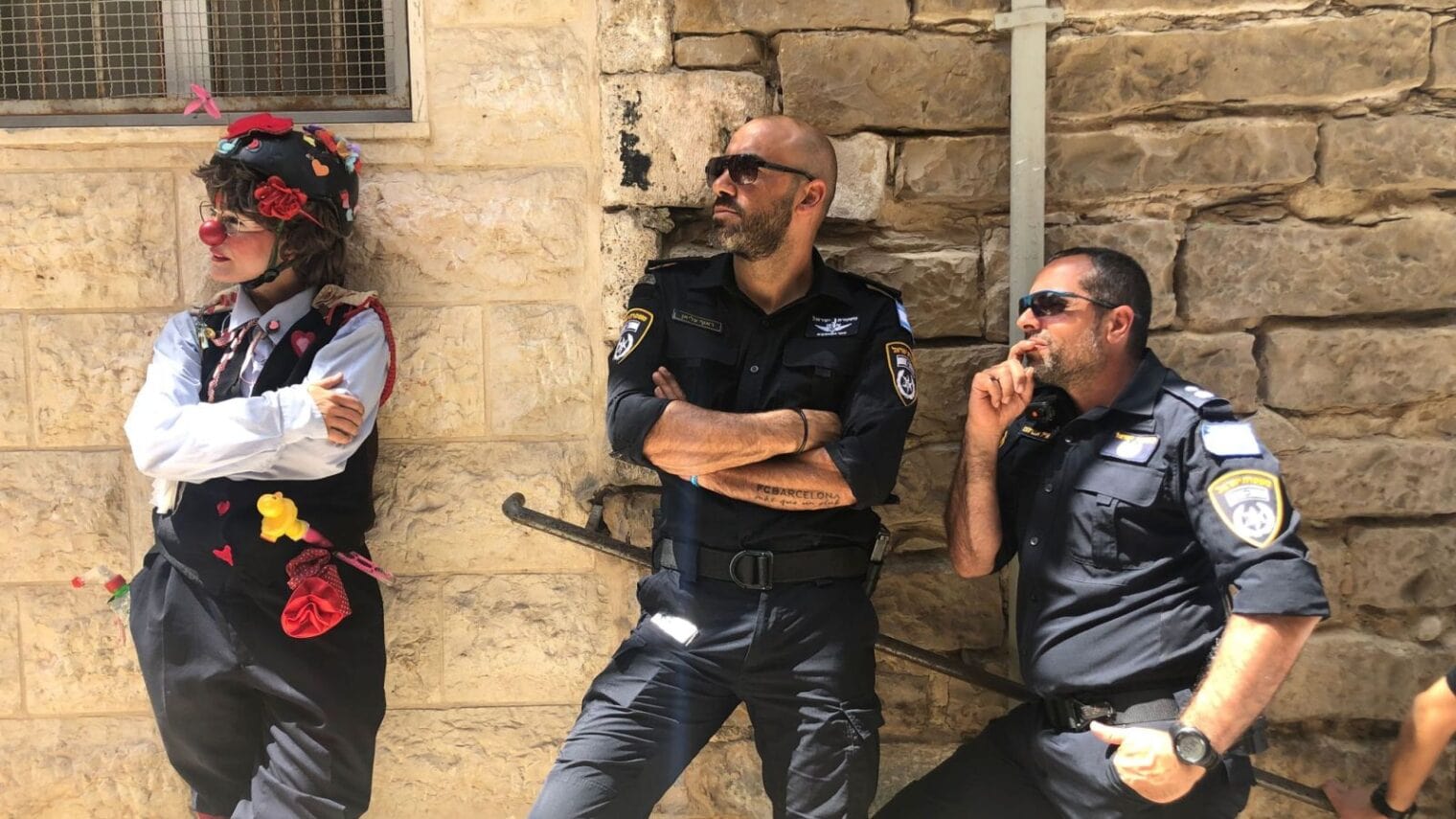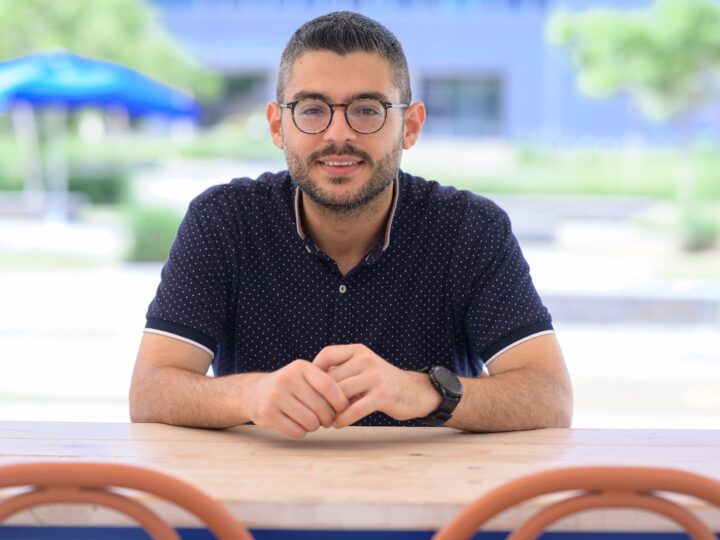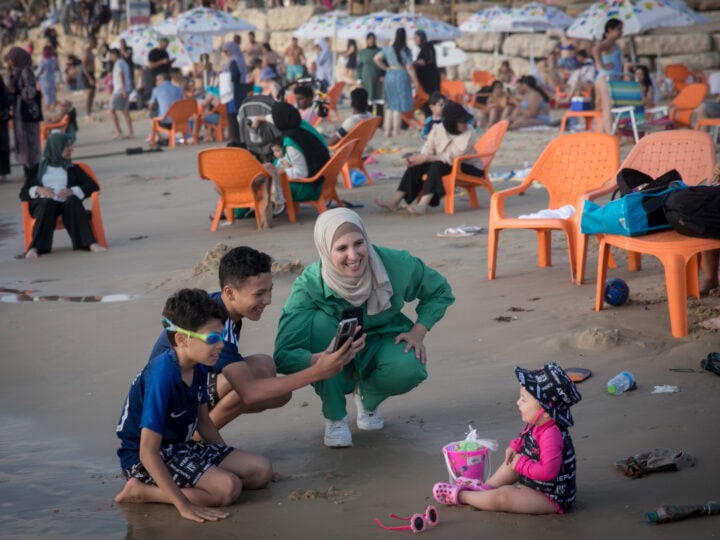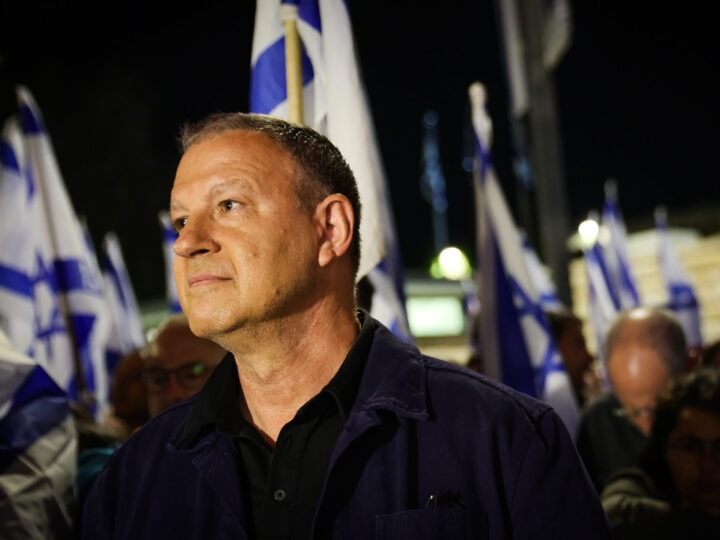Public protests don’t seem like the obvious setting for the distribution of love and hearts. But for one performance artist, that’s exactly what they are.
“Hashoteret Az-Oolay” (Policewoman Then-Maybe) has been a regular fixture at Israeli street demonstrations for the last three or so years.
In her big shoes, old-fashioned police uniform and red nose, adorned with flowers and hearts, she has become an inherent part of all sorts of crowds: anti-government protesters, Jewish ultra-Orthodox protesters, Palestinian protesters from East Jerusalem, and, most recently, the thousands protesting for the return of the hostages still held by Hamas in Gaza.
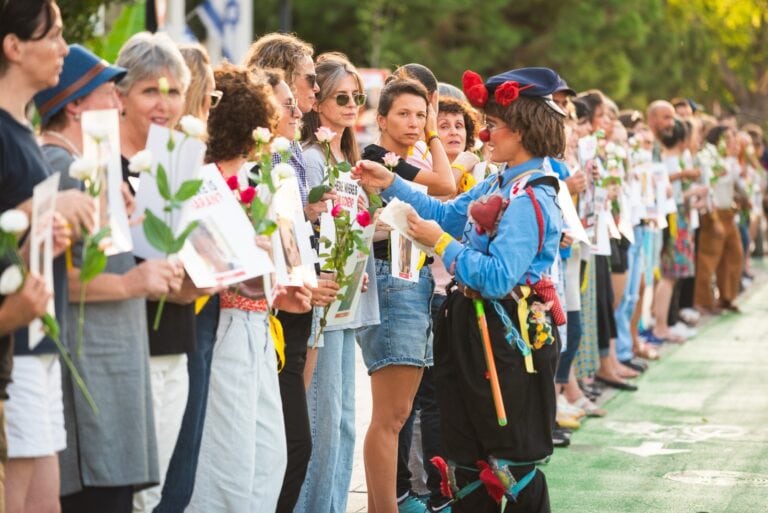
The name “Hashoteret Az-Oolay” is a play on one of Israel’s classic movie characters, and her police outfit’s name, “Yashar El-Halev” is a Hebrew play on Israel that actually means “straight to the heart.”
“The character was born in August 2020,” her creator, Idit from Jerusalem, tells ISRAEL21c. “I always had a dream to create a character that would be able to move across the city and connect with all the different kinds of communities that the city of Jerusalem holds, but I didn’t know how it would happen and how it would manifest itself.”
Like Charlie Chaplin
In 2020, large demonstrations against the government started taking place at the public square outside the prime minister’s official residence on Balfour Street in Jerusalem.
“To be honest, I’m not really into demonstrations. But it was during Covid, and there were no gatherings because of it,” says Idit.
“I was out on a run, and I heard the shouts from afar, and I went to see what’s happening there.”
She saw demonstrators playing drums and it seemed to her like a military march — which she found ironic. “It highlighted to me this dissonance, that we live in a military environment that the protesters are protesting against but are doing so in the same kind of language,” she explains.
“I wanted to be like Charlie Chaplin and show how everything is comical in this power structure. I wanted to take it apart using humor,” she notes.
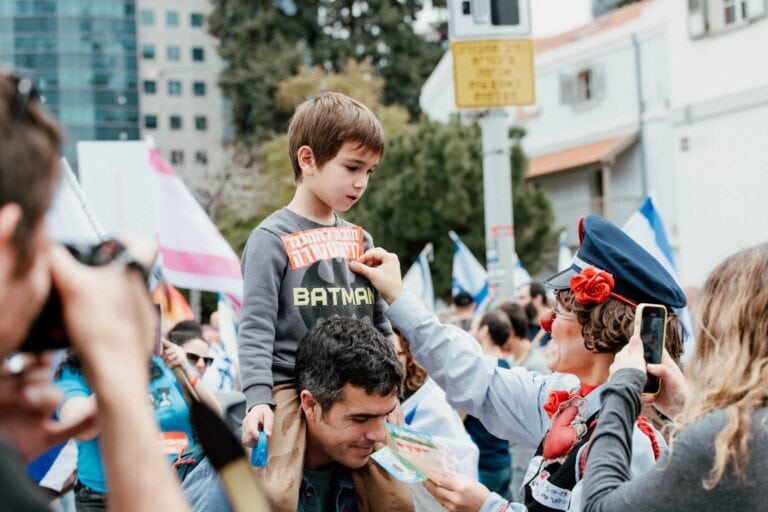
That was on a Tuesday. By Wednesday, she had her character ready with big army shoes, old-fashioned police uniform, and heart stickers that belonged to the mother of a friend who had passed away.
People want the stickers
“I went to the protest on Saturday night with the objective of serving my surroundings. That’s my goal: make them happy and distribute heart stickers. It had a really powerful echo,” the artist says.
“People really wanted to get these heart stickers. I was shocked with how much this little, funny character I created resonated so much.”
“I hold onto this simple belief that there are hearts out there.”
She aims to “connect with beating hearts, to create joy and to make people laugh, and to practice listening to the heart while going through the motions of life.”
Hashoteret Az-Oolay kept coming to the Balfour demonstrations, but also went to ultra-Orthodox demonstrations at Bar-Ilan Junction in Jerusalem and then also to Palestinian protests at the Old City’s Damascus Gate and Sheikh Jarah, an East Jerusalem Arab neighborhood.
“For me, this is fulfilling a dream – to be able to become a character who is a medium who can communicate with everybody, whether police officers, ultra-Orthodox Jews, Palestinians, or Jews of all backgrounds.”
An anchor after October 7
Since October 7, Hashoteret Az-Oolay has stepped up her activities.
At first, she performed alongside other clowns for people evacuated from their homes, and also led two marches calling for the return of the hostages.
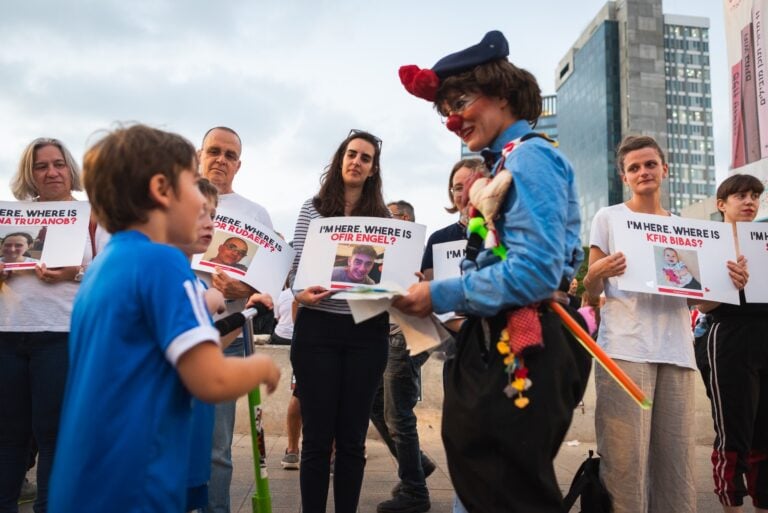
In the first few weeks of the war, she trained more clown “police officers” who joined her activities for a while.
Now, she spends most of her time in Jerusalem, in the protest tent set up by the families of the hostages.
“On Fridays, there are Shabbat receptions there. The sister of Aviva Siegel, who was kidnapped and released, spoke. Aviva’s partner, Keith Samuel Siegel, is still held captive. Aviva’s sister wanted to light the [Shabbat] candles, and I always carry matches as part of my uniform. She said, ‘I’d like the police officer to light the candles.’
“It was so surreal, because I’m a clown and this is a difficult and scary situation that somehow manages to maintain space for this softness that a clown can offer. We lit the candles together and said the blessing together, and it demonstrated to me that this presence, this image that I created that keeps on popping up, has strangely become an anchor in space.”
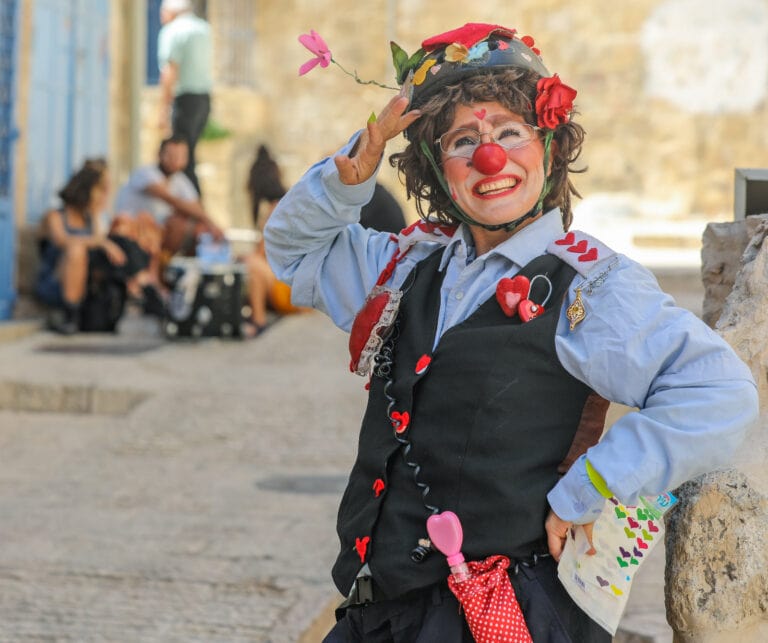
As an artist, she sees art also as faith and trust and practice. “I wish for myself and for everyone I meet that I can be a memory of beauty, of our heart,” she says.
“I hold onto this simple belief that there are hearts out there, and that we can do good here in the world, and in our land, and with all people. I’d like to light this spark in the heart that goes, ‘Oh yes, perhaps we can do it, even if all the stories say otherwise.’”




